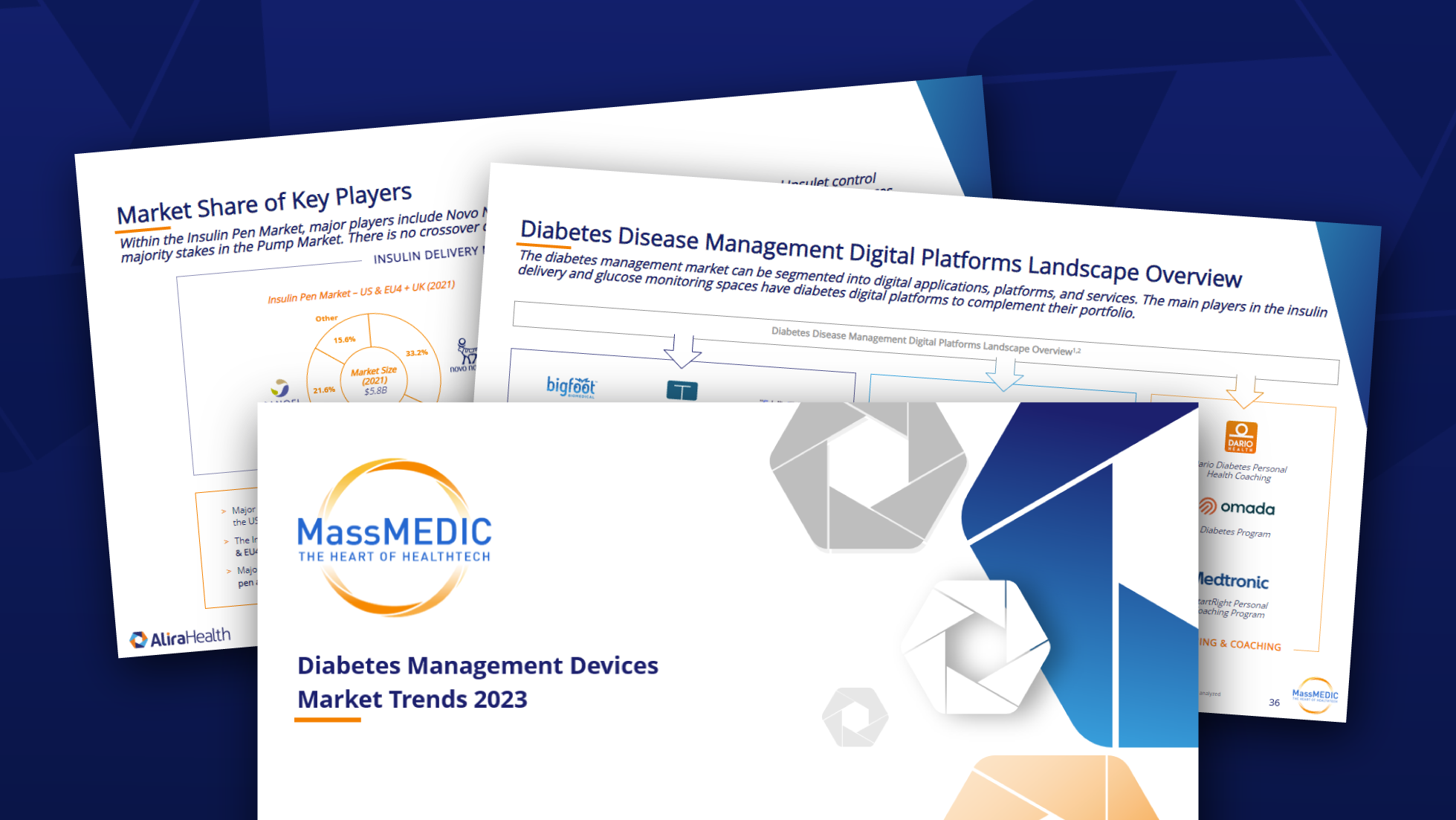Technological Innovations in Diabetes Management Medical Devices
Today, diabetes device companies are innovating to make disease management easier for patients. Diabetes devices fall into three broad segments:
- Glucose monitoring, which determines the patient’s blood glucose levels;
- Insulin delivery, which allows the patient or healthcare professional to deliver insulin in the right quantities at the right time;
- Digital health, which helps inform how much insulin to deliver.
In our report, Diabetes Management Devices Market Trends 2023, we identified 163 different products globally in the current product pipeline. Two-thirds of the products fall into the glucose monitoring segment. The remaining are evenly split between delivery devices and digital health.
Most of these new products are still in the development phase and many are in clinical trials. It’s important to note that numerous innovations are bringing the three device segments closer together in an effort to make disease management easier for patients.
This article discusses the notable trends within each device segment. More details on this market are in our report Diabetes Management Devices Market Trends 2023.
Trends: Glucose Monitoring
Two broad trends are seen in the glucose monitoring segment, with the goal to make it easier for patients to keep track of their glucose levels.
Miniaturization. Any glucose monitor that is placed on the body can inhibit movement and interfere with a patient’s quality of life. In recent years, dramatic improvements in various technologies, including polymers and semiconductors, have allowed manufacturers to create increasingly smaller devices. These devices also require fewer components and less battery power. Smaller devices are less likely to affect mobility.
Remote continuous monitoring. Continuous glucose monitoring devices were developed to alleviate the need for patients to prick their skin multiple times a day. These devices allow patients to track their glucose for one day or multiple days, although they do still have to prick themselves with the device, and the devices last for a limited time (currently, up to ten days). Some companies are developing non-invasive systems that don’t require needles or implants, using near-infrared spectroscopy, Raman spectroscopy, or other methods that work without breaking the skin. Other companies are focused on improving continuous glucose monitoring systems so that they last longer.
Trends: Insulin Delivery
While the miniaturization trend also applies to insulin delivery devices, such as pumps that don’t need tubes or can be directly placed on the body or implanted, our report calls attention to two major trends in this segment, which also overlap with the other segments.
Shift to closed-loop systems from separate glucose monitoring, insulin delivery, and digital health systems. Normally, patients test their glucose levels using a blood glucose monitor and enter the numbers into an app. The app tells them how much insulin to deliver, and patients then administer the correct amount using either an insulin pump or pen. Manufacturers are focused on bringing these separate parts into a closed-loop system, in which glucose levels are continuously monitored and smart patch pumps automatically administer insulin as needed. A closed-loop system would dramatically reduce breakthroughs from a patient’s target glucose levels range and alleviate patient stress.
Smart insulin pens, combining delivery and digital health. Insulin pumps and pens serve the same purpose – delivering the right amount at the right time. Pumps either connect to the body through a tube and inject insulin just below the skin or come in the form of patches that attach directly to the body. Many patients prefer insulin pens because they find the pumps inconvenient. Traditional pens require the patient to manually calibrate how much to inject, based on the meal they are about to have. Smart reusable pens allow patients to use an app to automate that process, making it more accurate and simpler for patients.
Trends: Digital Health
Innovations in the digital health segment are driven by the need to unite all three segments as manufacturers focus on simplifying patients’ lives and making disease management easier.
Integrated platforms. Digital health players are creating integrated monitoring platforms that allow patients, caregivers, and healthcare providers to visualize relevant data in one application and to connect with one another. They can also receive/deliver telehealth services and treatment interventions.
Open-source automated insulin delivery. As the three segments become more integrated, it is challenging for device companies to develop all three components. Many players have opened their platforms, some developed through artificial intelligence, so that patients can integrate the best combination of solutions that are ideal for their needs.
Improving Quality of Life for Diabetes Patients
To automate disease management as much as possible, the diabetes device market innovates smaller and smarter products that are increasingly integrated across all three segments. Diabetes device manufacturers are united in driving toward the goal of seamless glucose management to provide patients with a better quality of life.
To learn about the significant growth in this market and access other key learnings, read our report, Diabetes Management Devices Market Trends 2023.

Subscribe to our newsletter for the latest news, events, and thought leadership
